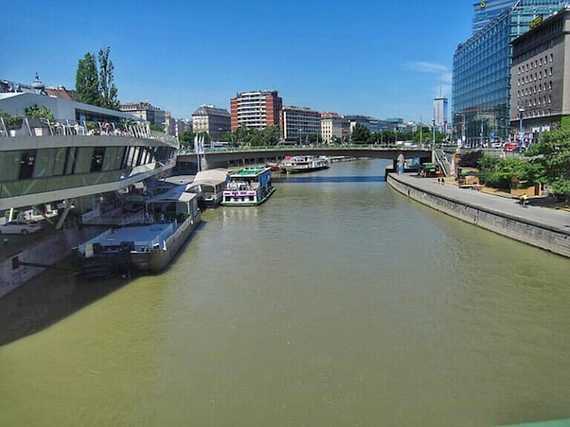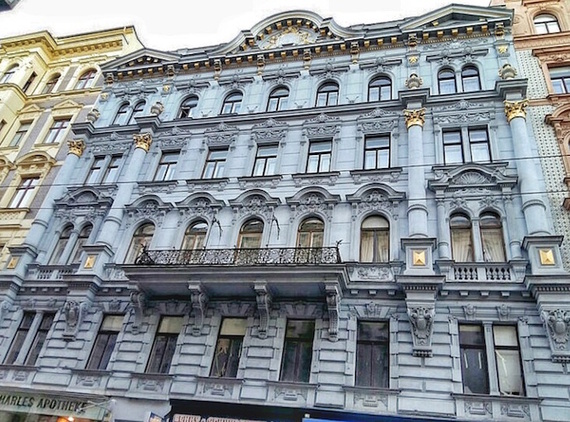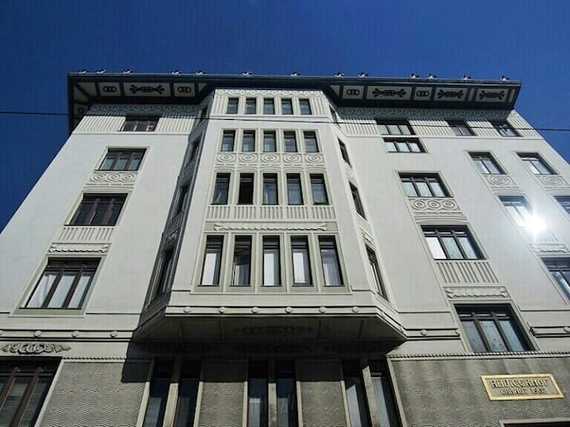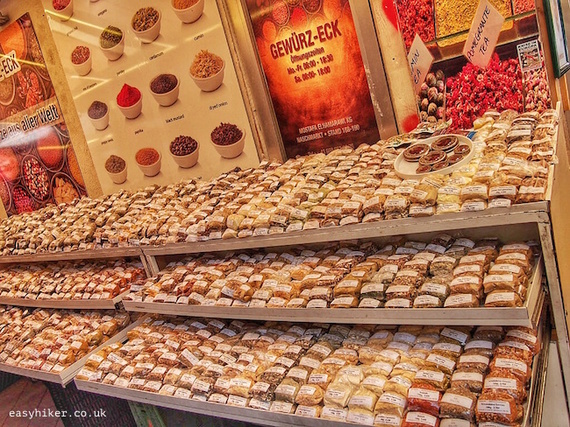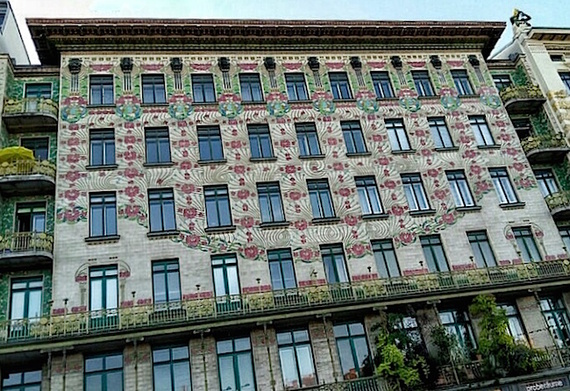1. The Danube in Vienna is neither blue...
I know Johann Strauss says so but he must have been color blind.
2. nor beautifu ...
Honestly: does it "merry your heart"? Do you feel that "happy wishes pour from your full chest" as Franz von Gernerth's lyrics to Strauss's most famous waltz have it?
3. ...and it is not even, strictly speaking, the Danube
What flows through Vienna - or, to be more precise, through her northern periphery - is not the Danube but the "Donaukanal". This "kanal" is not, as its name appears to suggest, an artificial waterway, but a regulated side branch of the actual river whose main branch flows a mile or so to the north.
If you want to see the Danube proper, take a subway train to the Donauinsel, but make sure you are looking for the river in the right place.
The water on the island's northern side is just an artificial flood relief channel, called the "Neue Donau", the New Danube. It is also the only one of Vienna's many Danubes which, with a bit of self-persuasion, you might actually call blue. (There are two more Old Danubes further to the north. Things in Vienna often get more complicated once you take a closer look.)
4. Many of Vienna's grandest, most Imperial buildings were built when the Empire was already crumbling ...
All the Imperial pomp around Vienna's Ringstrasse was built in the years between 1860 and 1910, when the actual Empire had already been divided into two almost even parts (with more divisions clearly in the offing), when the Emperor was gently sliding into senility, and when the Austrian Parliament could not even agree on a common language (MPs were encouraged to baffle each other with untranslated speeches in languages such as Slovak and Ruthenian). It is as though Vienna had asked herself: is there anything we can do to prevent or even to slow down this slide into decadence and oblivion? No? Then let's have a party!
5. .. while most of Vienna's bourgeois pomp is the architectural equivalent of icing sugar
Apollo pursuing Daphne, Hercules fighting the Nemean Lion, gallivanting nymphets, Corinthian columns and Egyptian urns: late 19th century property developers could order just about any architectural ornament from craftsmen's standard catalogues as a way of providing their house fronts with a "touch of class". Having built the houses themselves from humble brick, of course, because that was the cheapest way. The industrial quantities of stucco that were pasted on to Viennese buildings at the time apparently make it difficult for modern tenants to put as much as a nail into their walls.
6. Now for the good news: there are some real architectural gems to be found ...
The Viennese variety of Art Nouveau, called the Secession, did not only produce Gustav Klimt and Egon Schiele, but also some of Europe's most splendid architecture: a unique mix of "Arts and Crafts" sensibilities with bold geometric shapes and lines, already foreshadowing later styles such as the Art Deco movement.
Is there a better food-market-cum-food-court in Europe? Perhaps there is, but the Naschmarkt on Wienzeile Boulevard will surely take some beating. All the former constituent nations of the Dual Monarchy find themselves happily reunited here and, what is more, reconciled with their old adversaries including the Southern Slavs and the various peoples of the Ottoman Empire.There is probably no food from the Balkans or from around the eastern Mediterranean - spices, fruit and veg, specialty meats, blends of tea or coffee - that you cannot find here.
Incidentally, the Linke and the Rechte Wienzeile on either side of the Naschmarkt have a specifically high concentration of interesting Art Nouveau buildings - making sure that walking past the Naschmarkt can be as rewarding as strolling right through it.
